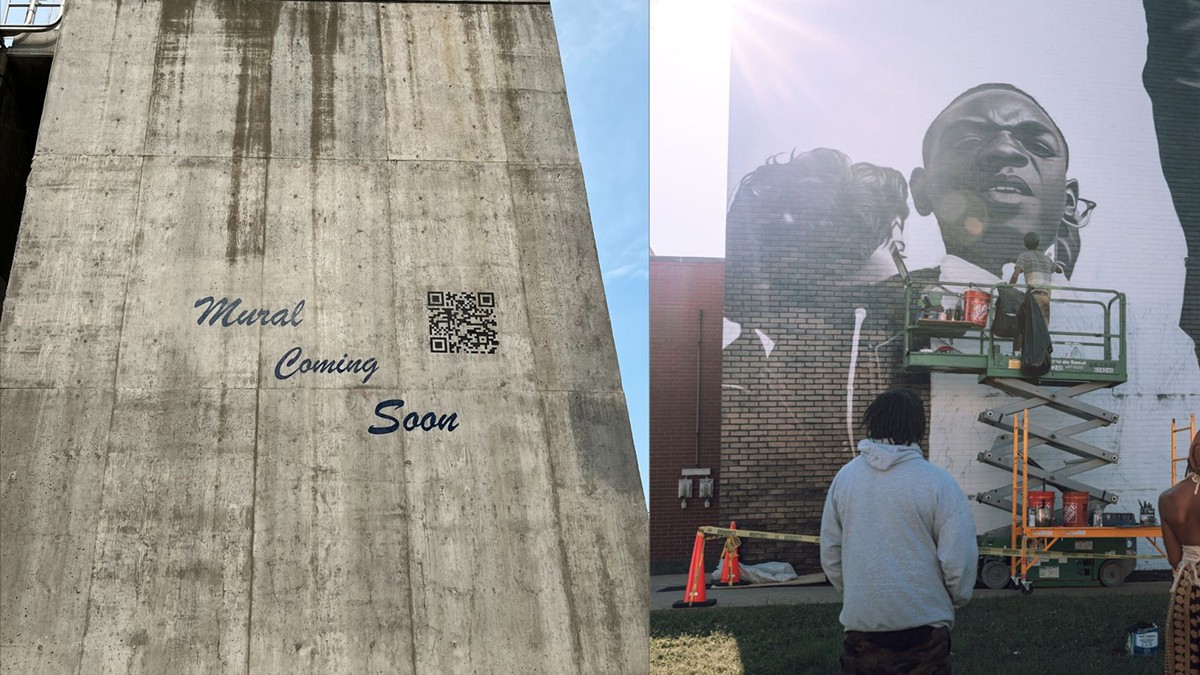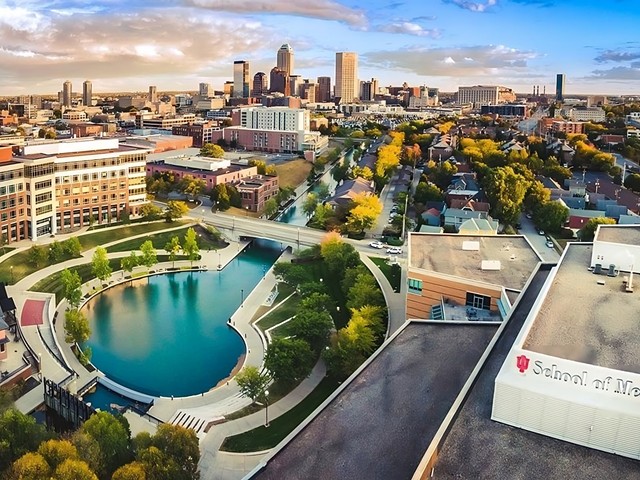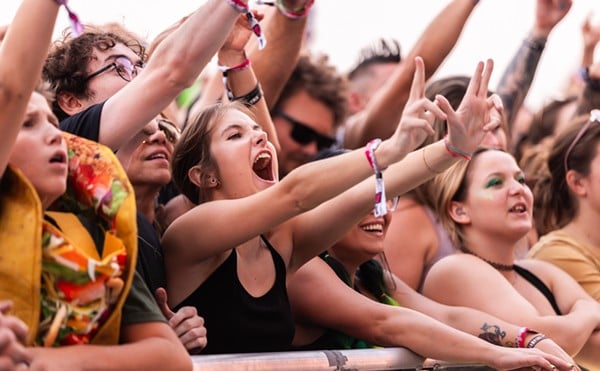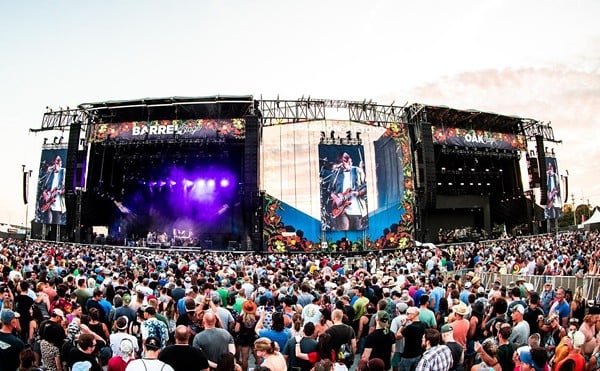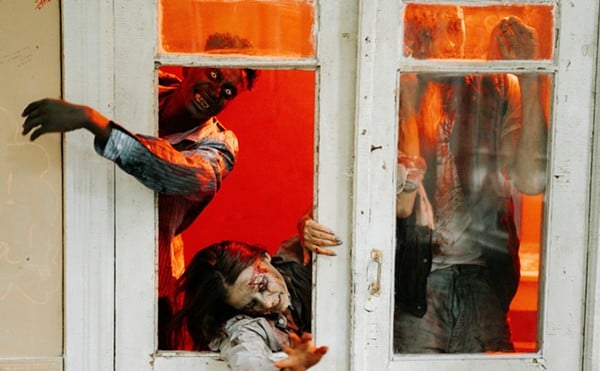Louisville’s cityscape is getting a touchup, particularly on the 10th Street flood wall and MSD pump station.
The pump station will also serve as an entryway to Waterfront Park’s Phase IV, bringing a colorful entrance to an all-new area being worked on right now.
This initiative, according to the Louisville Commission on Public Art, aims to invigorate publicly accessible spaces around Louisville with murals covering flood walls along the Ohio River.
LEO Weekly sat down with Jessica Bennett Kincaid, the project’s founder, to learn more about the flood wall and what Louisvillians can expect from the project, and why it was started in the first place.
Some portions of the interview with LEO and Kincaid have been altered for clarity.
LEO: What kinds of themes are you aiming for with this initiative?
Kincaid: On the flood wall, we specifically do have a little bit more of some thematic or conceptual framework that we hope artists will propose designs. That corridor, that 10th Street access point, has been the focus of a couple of different cultural activation initiatives in the last 10 years. We did the Connect/Disconnect temporary public art exhibition along that site as well back in 2016 I believe it was.
Now to see waterfront park phase four in development there, and thinking about how it's really kind of drawn, showing this connection between either side of the interstate off ramp, and that flood wall gateway, is really going to be the welcoming access point to this intersecting space.
We wanted to continue to build on this idea of connection both to the natural environment via the waterfront connection to recreation and activity within our city through the waterfront park space they're building. I'm hoping that designs underscore connection to civic infrastructure, social infrastructure and sort of this natural landscape.
LEO: Is there a story behind you getting this project together?
Kincaid: The work towards being able to activate our flood walls in this way precedes me. So this has been a conversation that started even before Covid (19), to explore that possibility. When I took this role, I wanted to revive that conversation and see what might be possible, and the timing was just right. So we're very excited to again pursue that opportunity, and hopefully it grows into a full program.
It may be structured similarly to our creative crosswalks program, where Metro creates a workflow and a process and helps steer and navigate the project. There are a lot of different civic organizations and regulatory organizations involved in producing a project like this. And it's not so intuitive necessarily to even very capable, experienced mural artists. But we'll create the path, and the goal is to make this space accessible to the community for creative expression.
LEO: What does it feel like to know so much art will adorn this open mural?
Kincaid: It's really exciting. I think that Louisville has a very unique identity in terms of their creative expression. I think a couple of people have asked, “Oh, is the goal to replicate things that you've seen in this city or that city?” And the answer is no, we want to do our own thing. We want it to be unique to Louisville. And obviously it's not so unique that we would do a flood wall mural as I mentioned, there are murals on flood walls all over the country, and other cities have robust mural programs in their own right. So in that sense, there is commonality.
But the great thing about public art is that it’s really, really successful. Public art is site specific, and so we're figuring out what that means for Louisville. This is just the beginning of a lot of different types of public art that we might see emerge throughout our community, beyond murals and some different types of art forms that are currently represented in our city. So that's really exciting to think about.
LEO: What kinds of opportunities does this give to local artists in Louisville?
Kincaid: This mural is the sort of largest canvas. It will probably be the largest public art project to date that we've seen produced in our city. And it was important to my office and to the Commission on Public Art to make sure that this opportunity was focused towards Kentuckiana artists. Because, again, calling back to that site-specific piece of public art, and how this is really centered or anchored in what will be a great community asset. We wanted to make sure that it was produced by an artist who, or artist teams who have a sense of this community and have a connection here, and is going to really authentically reflect the identity of our place.
The deadline to apply for the flood wall mural project is Sept. 1.

